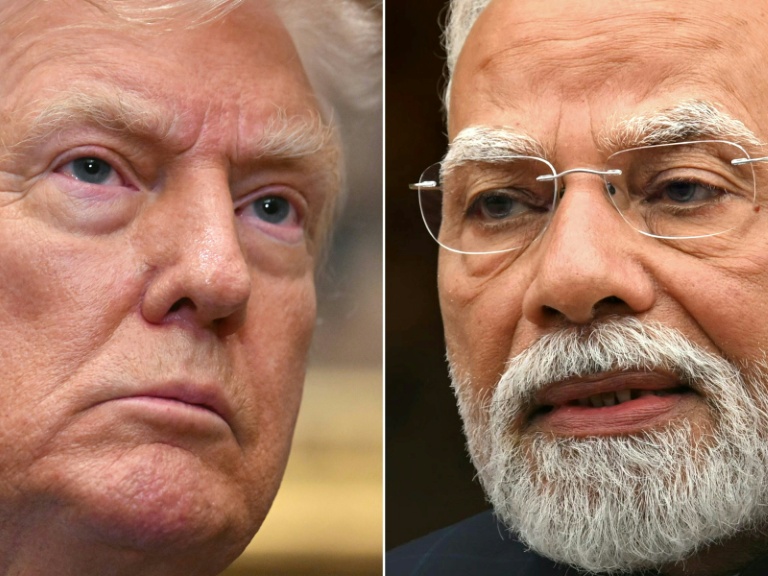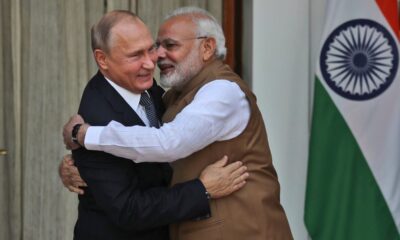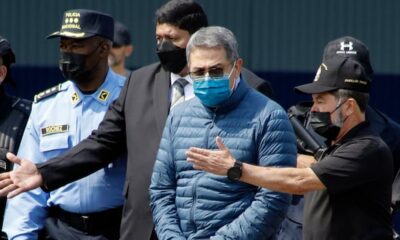World
Modi Proposes Tax Cuts Amid Looming US Tariffs on India

Indian Prime Minister Narendra Modi has proposed significant tax cuts on consumer goods in response to looming tariffs from the United States. With US President Donald Trump threatening to double import duties on India from 25 to 50 percent, the move aims to stimulate domestic demand and mitigate potential economic fallout. Analysts estimate that these tariffs could severely impact India’s economy, which is already facing challenges.
Trump’s proposed tariffs are intended as a punitive measure against India for its continued oil purchases from Russia, which he claims financially supports Moscow’s invasion of Ukraine. This policy has raised concerns among Indian exporters, who warn of a potential decline in orders and significant job losses. In reaction to these threats, Modi condemned the tariffs as “unfair, unjustified, and unreasonable,” while simultaneously outlining measures to ease the tax burden on citizens.
Tax Reform Plans to Boost Consumption
During his annual address commemorating India’s independence, Modi committed to reducing the goods and services tax (GST) on a range of products. The proposed reforms aim to simplify the current four-tier GST structure, which sees rates varying from five to 28 percent. If implemented, most goods would be taxed at either five or 18 percent, making essential items more affordable.
Economists predict that these changes could lead to annual savings of between $13 billion and $17 billion for consumers. Analysts from Emkay Global Financial Services have characterized this initiative as a “welcome reform towards boosting domestic consumption.” They anticipate that a significant portion of goods currently subject to the highest tax rate would see reductions to the middle tier.
The policy has been described by Modi as a “Diwali gift,” referencing the Hindu festival that traditionally sees increased consumer spending. The proposed cuts could not only ease the financial burden on households but also bolster demand in the economy as it faces external pressures.
Political Implications and Economic Outlook
The future of these tax reforms largely depends on the GST Council, which includes representatives from various state governments. While the proposal seeks to enhance Modi’s appeal among the middle class, it could also strain public finances, according to economic experts. The timing of this announcement is particularly relevant, as elections are anticipated later this year in Bihar, a key state with a population of approximately 130 million.
Economist Deepanshu Mohan from O.P. Jindal Global University noted that this tax adjustment represents a strong response to the threat of US tariffs. He emphasized that it reflects Modi’s commitment to ensuring the economic welfare of the middle class, who have felt increasingly marginalized in India’s economic landscape.
While Modi’s government has faced calls for an overhaul of the GST system for years, the backdrop of deteriorating US-India relations has accelerated the urgency of these reforms. Economists warn that if a trade deal is not reached, Trump’s tariffs could push India’s GDP growth below 6 percent for the fiscal year, contrary to the central bank’s projections of 6.5 percent growth.
The impact of US tariffs and India’s oil imports from Russia will continue to evolve as negotiations proceed. According to trade intelligence firm Kpler, most oil cargoes imported by India were contracted prior to Trump’s tariff threats. Analysts indicate that while Indian refiners are exploring alternative oil sources, such as from the US and West Africa, Russian crude remains an integral part of India’s supply.
As the deadline for the tariff increase approaches on August 27, 2023, the state of US-India trade negotiations remains uncertain. New Delhi asserts its commitment to reaching a trade agreement, but reports suggest that US negotiators have postponed a planned visit to India, further complicating the situation.
In summary, Modi’s proposed tax reforms could serve as a crucial strategy to mitigate the impact of US tariffs while simultaneously addressing domestic economic concerns. The outcomes of these initiatives will be closely monitored in the coming months as both nations navigate their complex trade relationship.
-

 Politics4 weeks ago
Politics4 weeks agoSecwepemc First Nation Seeks Aboriginal Title Over Kamloops Area
-

 World5 months ago
World5 months agoScientists Unearth Ancient Antarctic Ice to Unlock Climate Secrets
-

 Entertainment5 months ago
Entertainment5 months agoTrump and McCormick to Announce $70 Billion Energy Investments
-

 Science5 months ago
Science5 months agoFour Astronauts Return to Earth After International Space Station Mission
-

 Lifestyle5 months ago
Lifestyle5 months agoTransLink Launches Food Truck Program to Boost Revenue in Vancouver
-

 Technology3 months ago
Technology3 months agoApple Notes Enhances Functionality with Markdown Support in macOS 26
-

 Lifestyle3 months ago
Lifestyle3 months agoManitoba’s Burger Champion Shines Again Amid Dining Innovations
-

 Top Stories2 months ago
Top Stories2 months agoUrgent Update: Fatal Crash on Highway 99 Claims Life of Pitt Meadows Man
-

 Politics4 months ago
Politics4 months agoUkrainian Tennis Star Elina Svitolina Faces Death Threats Online
-

 Sports5 months ago
Sports5 months agoSearch Underway for Missing Hunter Amid Hokkaido Bear Emergency
-

 Politics5 months ago
Politics5 months agoCarney Engages First Nations Leaders at Development Law Summit
-

 Technology5 months ago
Technology5 months agoFrosthaven Launches Early Access on July 31, 2025




















